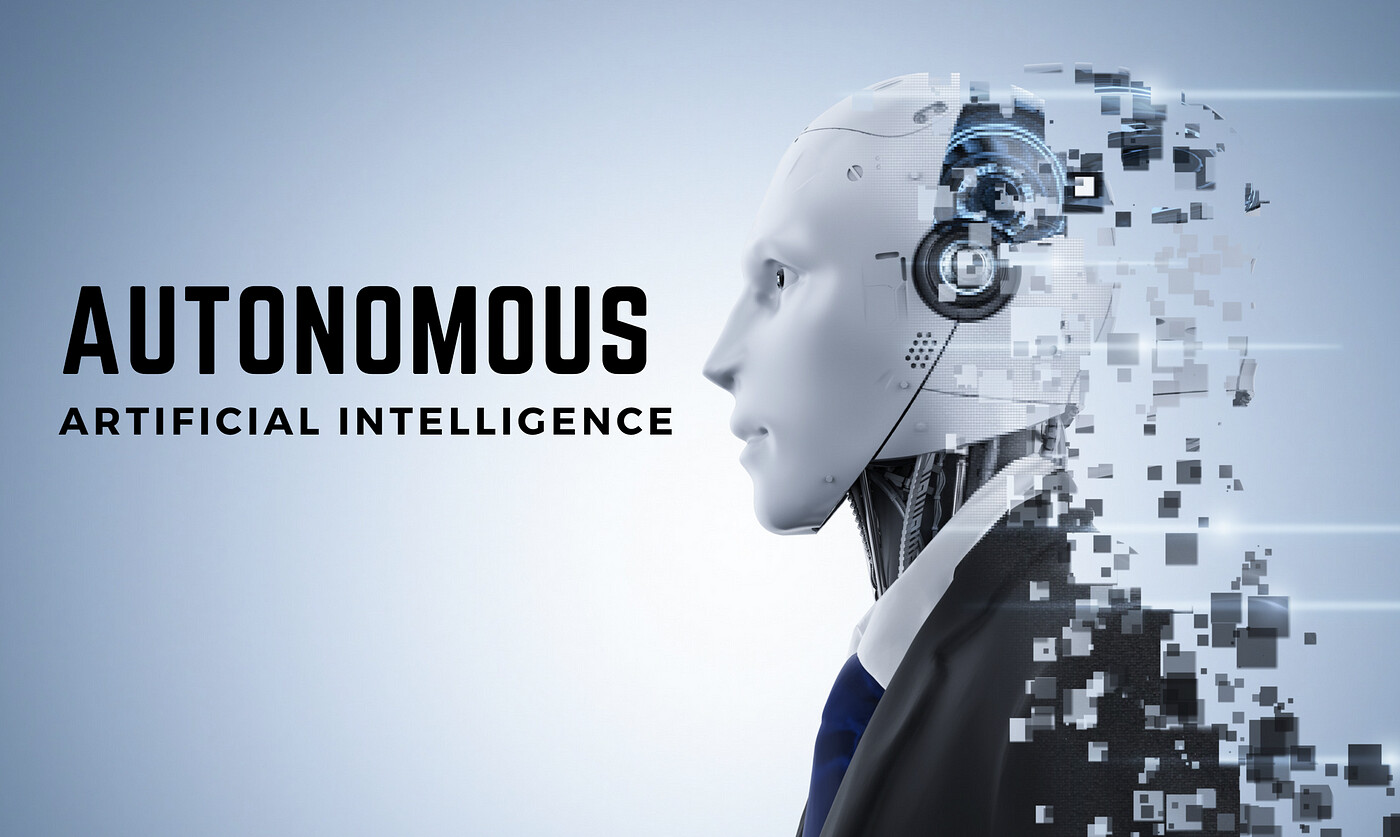Picture a world where software doesn’t just respond to commands but actively thinks, decides, and acts on its own. That’s the realm of agent-oriented programming (AOP), a paradigm reshaping software development.
While traditional object-oriented programming (OOP) treats software components as passive entities waiting for instructions, AOP empowers software agents with autonomy and initiative. These agents aren’t just chunks of code – they function like digital employees, equipped with interfaces and messaging capabilities to perceive their environment, make decisions, and interact with other agents.
If OOP is like a company where every employee needs explicit instructions for each task, AOP creates a workplace of self-driven professionals who understand their roles, communicate effectively, and take initiative to achieve their goals. These digital agents can analyze situations, adapt their behavior, and even negotiate with other agents to get things done.
Introduced by Yoav Shoham in 1990, AOP has evolved from a theoretical concept into a powerful toolkit for building intelligent, autonomous systems. Modern platforms now leverage this framework to create software that handles complex tasks with minimal human intervention, from managing supply chains to optimizing resource allocation.
AOP aligns with how we naturally think about problem-solving. Instead of breaking down problems into objects and methods, we can design systems that mirror human-like decision-making processes, creating more intuitive and adaptable solutions for today’s dynamic digital landscape.
Core Concepts of Agent-Oriented Programming
Agent-oriented programming (AOP) reflects human cognitive processes in software development. Just as humans have beliefs, goals, and capabilities, AOP agents possess a sophisticated ‘mental state’ that drives their autonomous behavior.
An agent’s belief system is foundational. These beliefs represent its understanding of the environment. For example, a manufacturing robot might believe ‘the assembly line is operational’ or ‘part A needs to be welded to part B.’ These beliefs are updated as the agent interacts with its environment through sensors and communication with other agents.
Goals form the second critical component. Unlike traditional programs that execute predefined instructions, AOP agents work toward specific objectives. A personal assistant agent might aim to ‘schedule a meeting with the least calendar conflicts’ or ‘maintain inbox organization according to priority rules.’ These goals drive the agent’s decision-making process.
The third essential element is the agent’s understanding of its capabilities. Just as humans recognize their strengths and limitations, agents know what actions they can perform. For example, a smart home agent might control lighting and temperature but not the garage door if it’s not within its connected system. This self-awareness helps agents make realistic decisions about achieving their goals.
The true power of AOP emerges from the interplay between these components. An agent’s beliefs influence which goals it considers achievable, while its understanding of its capabilities determines the strategies it can employ. This creates a dynamic system where agents respond intelligently to changing circumstances while maintaining focus on their objectives.
The mental state of an agent is not just a collection of data—it’s a sophisticated framework that enables reasoned decision-making and purposeful action in pursuit of defined goals.
Yoav Shoham, Artificial Intelligence Journal
Prominent Frameworks in Agent-Oriented Programming
Agent-oriented programming has significantly evolved with robust frameworks supporting various programming environments and use cases. These frameworks are essential for developing sophisticated autonomous agents capable of complex decision-making and interaction.
It’s easy to get caught up in feature comparisons, academic alignment, or performance benchmarks, but in real-world projects, the ability to build, debug, and scale the system over time ends up being just as critical as the core functionality.
– Gianluca Ferruggia, General Manager, DesignRush
At the forefront is JADE (Java Agent DEvelopment Framework), a cornerstone in the Java ecosystem. JADE’s architecture excels in enterprise environments, offering robust support for FIPA standards and facilitating seamless agent communication. Its comprehensive toolkit for agent management and mobility makes it particularly effective for building scalable multi-agent systems.
AgentSpeak focuses on logic programming and the belief-desire-intention (BDI) architecture, excelling in scenarios requiring complex reasoning and decision-making capabilities. Unlike JADE’s object-oriented approach, AgentSpeak provides a more natural language for defining agent behaviors, simplifying the modeling of sophisticated cognitive processes.
For Python enthusiasts, PADE (Python Agent DEvelopment framework) offers a modern and accessible entry point into agent-oriented programming. Its compliance with FIPA and ACL standards ensures interoperability while leveraging Python’s extensive ecosystem. PADE’s straightforward syntax and rich feature set make it particularly appealing for rapid prototyping and academic research projects.
When comparing these frameworks, several factors come into play. JADE’s enterprise-ready infrastructure is ideal for large-scale commercial applications. AgentSpeak’s logic-based approach suits projects requiring complex reasoning and decision-making, particularly in AI research. PADE, with its Python foundation, excels in data-driven applications and scenarios where quick development cycles are crucial.
The best framework for your business is not always the one with the most features or glowing technical reviews. It is the one that matches your team’s current and projected skill set, fits into your broader tech stack, and comes with a community or ecosystem that ensures you are not building yourself into a corner.
– Eugene Mischenko, President, E-Commerce & Digital Marketing Association
The choice between these frameworks depends on specific project requirements. For instance, JADE’s mature ecosystem provides the necessary tools and stability for robust enterprise integration and scalability. If your project involves cognitive modeling, AgentSpeak’s BDI architecture offers a more suitable foundation. PADE balances modern development practices with essential agent-oriented features.
Applications of Agent-Oriented Programming
Agent-oriented programming (AOP) has transformed several key industries through its ability to create autonomous, interactive software entities. This article explores how intelligent agents are impacting various sectors with their adaptive capabilities and independent decision-making powers.
Intelligent Tutoring Systems
Educational technology has advanced remarkably through AOP-powered intelligent tutoring systems. These systems deploy multiple specialized agents working together to deliver personalized learning experiences. For example, modern tutoring frameworks utilize a set of collaborative agents including pedagogical expert agents that adapt teaching strategies, student agents that track learning progress, and feedback agents that provide timely guidance.
The pedagogical expert agent acts as the primary instructor, presenting material in a logical sequence and adjusting the difficulty based on student performance. Meanwhile, the student agent monitors comprehension levels and learning patterns, while the feedback agent offers immediate, constructive responses to keep learners engaged and motivated.
This multi-agent approach allows the system to simulate the nuanced interactions of human tutoring. When a student struggles with a concept, the agents work together—the student agent identifies the difficulty, the pedagogical agent adjusts the teaching approach, and the feedback agent provides encouraging, targeted support.
These systems provide individualized instruction at scale. Unlike traditional classroom settings, each student gets a virtual tutor that adapts to their unique learning style and pace, offering unlimited patience and consistent availability.
The agents can also collaborate to identify patterns in learning behaviors across many students, helping to refine and optimize teaching strategies over time. This continuous improvement cycle creates an increasingly sophisticated and effective learning environment.
E-Commerce Recommendation Systems
In the e-commerce sector, AOP enables sophisticated recommendation systems that transform how online retailers connect products with customers. Modern e-commerce platforms implement multimodal, autonomous multi-agent systems that work together to analyze customer behavior, predict preferences, and deliver personalized shopping experiences.
These agent-based systems go beyond simple product suggestions. They incorporate multiple specialized agents—some focused on analyzing purchase history, others on tracking browsing patterns, and still others on identifying emerging trends across the customer base.
The power of this approach lies in the agents’ ability to work both independently and collaboratively. While one agent might focus on understanding a customer’s style preferences, another might analyze price sensitivity, and a third might track seasonal buying patterns. Together, they create a comprehensive view of each customer’s needs and preferences.
These agents adapt in real-time to changing customer behavior. If a shopper’s interests shift, the system quickly recognizes the change and adjusts its recommendations accordingly, ensuring relevance and maintaining engagement.
Properly implemented, these systems significantly increase customer satisfaction and sales by presenting the right products to the right customers at the right time.
Robotics and Automation
In robotics, AOP provides the framework for creating truly autonomous systems capable of adapting to complex, changing environments. Multiple agents work in harmony to handle different aspects of robot operation—from environmental sensing and decision-making to motion planning and execution.
Each agent specializes in a specific aspect of the robot’s functionality. Navigation agents process sensor data and plan routes, while task execution agents handle specific operations. Meanwhile, safety monitoring agents constantly assess the environment for potential hazards.
This approach mirrors natural intelligence. Just as humans seamlessly coordinate various mental and physical processes to complete tasks, these agent-based systems enable robots to handle complex operations through the coordinated efforts of specialized components.
The practical applications are vast—from manufacturing robots that adapt to changing production requirements to search and rescue robots that can make split-second decisions in dangerous environments. Each use case demonstrates the power of autonomous agents working together toward common goals.
Advantages and Challenges of Agent-Oriented Programming
Agent-Oriented Programming (AOP) represents a significant evolution in software development, offering powerful capabilities while presenting distinct implementation challenges. This paradigm extends beyond traditional object-oriented approaches by introducing autonomous agents capable of independent decision-making and interaction.
One of AOP’s primary advantages lies in its inherent support for autonomy. Unlike conventional programming models where components passively respond to method calls, agents can proactively pursue goals and adapt their behavior based on environmental changes. For example, in a distributed system, agents can independently manage their tasks and resources, making real-time decisions without constant human intervention.
Scalability emerges as another crucial benefit of AOP. As noted in research on large-scale agent systems, the framework allows for dynamic addition or removal of agents without disrupting the entire system. This flexibility proves particularly valuable in evolving environments like cloud computing or IoT networks, where system requirements frequently change.
The decentralized nature of AOP also enhances system resilience. Rather than relying on a single point of control, multiple agents can work collaboratively, ensuring that the failure of one component doesn’t compromise the entire system. This distributed architecture naturally supports parallel processing and efficient resource utilization.
| Aspect | Agent-Oriented Programming (AOP) | Traditional Programming (OOP) |
|---|---|---|
| Approach | Focuses on autonomous agents that can make decisions and interact dynamically. | Focuses on objects that encapsulate data and behavior, responding to method calls. |
| Autonomy | High – agents can operate independently and pursue goals. | Low – objects require explicit instructions for each action. |
| Communication | Agents communicate through message exchanges, similar to the actor model. | Objects interact through method calls. |
| Scalability | Highly scalable – agents can be added or removed dynamically without disrupting the system. | Less scalable – changes can require significant refactoring and testing. |
| Flexibility | High – agents can adapt to changing environments and goals. | Moderate – objects are less adaptable and more rigid in their interactions. |
| Implementation Complexity | High – requires sophisticated coordination and debugging mechanisms. | Moderate – well-established tools and methodologies available. |
| Use Cases | Suitable for complex, dynamic systems like AI, robotics, and multi-agent systems. | Suitable for structured systems with clear object hierarchies and interactions. |
However, AOP’s sophisticated features come with significant challenges. The complexity of implementing agent-based systems stands as a primary hurdle. Debugging and testing become particularly demanding when dealing with multiple autonomous agents interacting simultaneously. The asynchronous nature of agent communications can make it difficult to reproduce and isolate issues.
The development of agent-oriented systems demands a fundamental shift in thinking about software architecture, moving from a centralized control paradigm to one of autonomous, cooperating entities.
Franco Zambonelli, Challenges and Research Directions in Agent-Oriented Software Engineering
Resource management presents another significant challenge. As agents operate independently and compete for shared resources, sophisticated coordination mechanisms become necessary to prevent conflicts and ensure efficient system operation. This complexity increases exponentially with the number of agents in the system.
The need for specialized development tools and frameworks also poses a practical challenge. While traditional programming environments are well-established, tools for agent-oriented development remain relatively immature. Developers often struggle with limited debugging capabilities and the absence of standardized development methodologies.
Security considerations add another layer of complexity. With agents potentially moving across different environments and interacting with various system components, ensuring secure communication and protecting against malicious agents becomes crucial. Implementing robust authentication and authorization mechanisms while maintaining agent autonomy requires careful balance.
Leveraging SmythOS for Agent Development

SmythOS transforms complex AI agent development into an intuitive, streamlined process through its comprehensive platform. The visual builder interface empowers developers to craft sophisticated autonomous workflows without diving deep into code, dramatically accelerating the development lifecycle from weeks to mere days.
The platform’s built-in monitoring capabilities provide unprecedented visibility into agent operations. Developers can track critical metrics in real-time, including message exchange rates between agents, resource utilization patterns, and task completion times. This granular oversight enables teams to quickly identify and resolve performance bottlenecks before they impact production systems.
One of SmythOS’s standout features is its seamless integration framework, connecting with over 300,000 APIs and data sources. This extensive connectivity ensures autonomous agents can interact with virtually any external service or database while maintaining secure connections and robust data handling. Whether integrating with cloud services, legacy systems, or IoT devices, SmythOS provides the flexibility needed for modern enterprise deployments.
Enterprise-grade security controls are deeply embedded within the SmythOS architecture, making it particularly valuable for organizations requiring stringent data protection and compliance measures. The platform implements comprehensive security protocols while maintaining the agility needed for rapid agent development and deployment.
The visual debugging environment sets SmythOS apart from traditional development platforms. Developers can observe agent behaviors and system flows through clear, visual representations, enabling rapid experimentation and iteration. This approach not only accelerates development but also reduces the likelihood of errors in complex agent interactions.
SmythOS democratizes AI, putting the power of autonomous agents into the hands of businesses of all sizes. It breaks down barriers, speeds up development, and opens new frontiers of what’s possible with AI.
With automatic scaling capabilities built into its core architecture, SmythOS ensures that autonomous agents can handle increasing workloads without performance degradation. This built-in scalability allows developers to focus on agent logic and functionality rather than infrastructure management, whether deploying a single agent or orchestrating multiple agents working in concert.
Future Directions in Agent-Oriented Programming

A hand reaching for a chatbot symbolizing AI integration. – Via capestart.com
Agent-oriented programming stands at the cusp of a transformative era. As artificial intelligence and machine learning capabilities mature, we are witnessing the emergence of increasingly sophisticated autonomous systems that can adapt, learn, and collaborate in ways previously unimaginable. The integration of AI techniques into agent programming frameworks opens up exciting possibilities for developing more intelligent and capable agents.
The evolution of AOP is being driven by several key technological advancements. Enhanced agent capabilities are emerging through the fusion of traditional BDI (Belief-Desire-Intention) architectures with modern machine learning approaches. Agents can now learn from experience, refining their decision-making processes while maintaining the crucial aspects of explainability and reliability that make AOP so valuable for critical applications.
Integration frameworks are becoming more sophisticated and streamlined. The future points toward unified development environments that seamlessly combine programming-based, learning-based, and model-based approaches. This convergence will enable developers to choose the most appropriate method for each aspect of agent behavior, whether it is hand-coded rules for safety-critical functions or learned behaviors for adaptive responses.
Perhaps most intriguingly, the role of AOP developers is evolving from writing explicit instructions to providing strategic guidance and constraints. Rather than programming exact behaviors, developers will increasingly focus on defining high-level goals, ethical boundaries, and interaction protocols, letting agents determine the optimal way to achieve objectives within these parameters.
The debugging and verification of agent systems is also undergoing significant advancement. New tools are emerging that can analyze complex multi-agent interactions, verify behavioral properties, and ensure compliance with specified norms and regulations. These developments are crucial for deploying autonomous agents in sensitive domains like healthcare, finance, and critical infrastructure.
Looking ahead, we can expect to see greater emphasis on the social aspects of agent systems. Future frameworks will likely provide enhanced support for agent collaboration, negotiation, and the formation of dynamic coalitions to tackle complex tasks. This evolution will be particularly important as agent systems become more prevalent in areas like smart cities, autonomous vehicle networks, and distributed energy systems.
